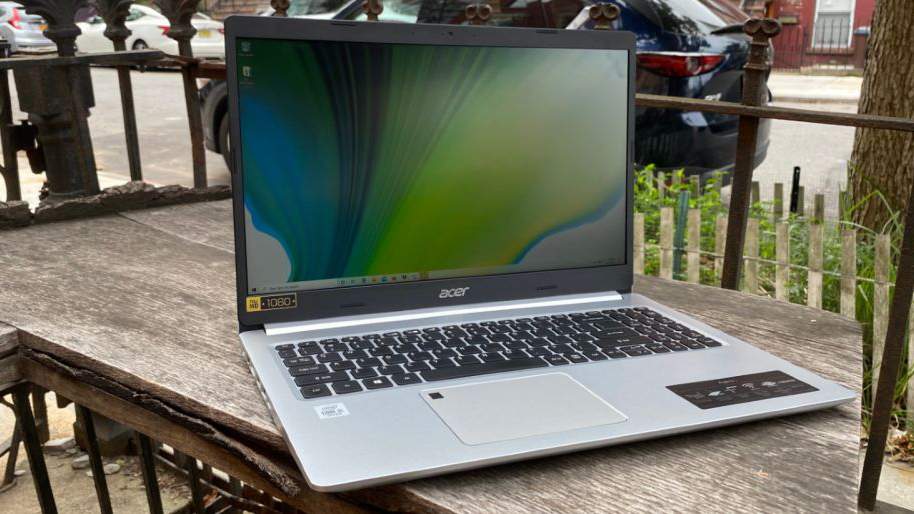AMD Ryzen 5000-series CPU FAQ
Learn the ins and outs of AMD Ryzen 5000-series CPUs

Ryzen 5000 series is AMD’s newest CPU line. The arrival of Ryzen and its underlying Zen platform marked a comeback starting in 2017 for AMD in terms of competitiveness with Intel and a stronger approach to the laptop market. The company made serious inroads last year with its Ryzen 4000-series chips. Since then, the Zen microarchitecture has undergone two generational updates, landing us today at Zen 3’s 7-nanometer process.
Zen 3 and Ryzen 5000 laptops are due to market later this year, so if you’re looking for your next gaming or video rendering mobile workhorse, you’ll want to know why everyone’s talking about the latest Ryzen line.
We've put together a guide for AMD's new Ryzen 5000 CPUs to help you decide if these exciting new chips earn a place in your next laptop.
19% performance uplift, 24% more power-efficient
At AMD’s Ryzen 5000 launch event in October 2020, CEO Lisa Su and CTO Mark Papermaster outlined key improvements for Zen 3 over the prior Zen 2 generation. The standout being an increase in instructions per clock (a general marker of performance) with a 24% improvement to power efficiency, providing up to two hours more battery life. For mobile processors, especially, this is a dream combo that you don’t often get: more performance and longer battery life.
What makes Zen 3 next-gen
Zen 3 chips use a completely different layout of CPU cores surrounding a single L3 cache so all cores have faster and equal access to a single memory pool that’s twice the size of Zen 2’s total split cache. This both provides more resources to each CPU core and helps decrease latency across a wide array of tasks. Zen 3 also uses improved LPDDR4 memory to boost performance and reduce power consumption compared to Zen 2.
Zen 3 will continue to use the Radeon Vega series of integrated GPUs with improved clock speeds of between 300 and 400 MHz over Ryzen 4000 equivalents.
Ryzen 5000 U, HS and HX series
When looking for a Ryzen 5000 machine, you’ll want to know the basics of the naming scheme AMD uses to identify its processors. In general, higher numbers are better. For example, a Ryzen 9 5980HX represents the top-line CPU out of the whole bunch. The first number after "Ryzen" indicates one of three models: Ryzen 5, 7 and 9. The “5980” after the above example tells us the performance tier, which is ranged from 5600 up to 5980.
Sign up to receive The Snapshot, a free special dispatch from Laptop Mag, in your inbox.
“HX” represents the CPU series, which tells us the intended category each CPU is designed for. U-series CPUs are for slim-and-lightweight notebooks. These systems offer the lowest performance, but at a great savings to battery life. HS and HX are the gaming and top-performance series, respectively, so expect to see them in larger notebooks.
Some Ryzen 5000U-series CPUs still use Zen 2
It’s important to note that not all of the Ryzen 5000 laptop processor lines use the latest Zen 3 microarchitecture. The Ryzen 3 5300U, Ryzen 5 5500U and Ryzen 7 5700U still run off Zen 2. Essentially, the lower performance tier of each model number will be left behind on Zen 2. The higher-tier Ryzen 3 5400U, Ryzen 5 5600U and Ryzen 7 5800U will receive the Zen 3 upgrade.
As we noted above, the U-series is intended for low-power laptops with portability and battery life in mind. If you’re shopping for high-end performance, you’re not likely to be offered a U-series laptop, so just keep it in mind that not everything that says “Ryzen 5000” necessarily means “Zen 3” as well.
What laptops to look for with Ryzen 5000 CPUs
In February, the first Ryzen 5000 laptops will go on sale. At CES 2021, alongside the official debut of the mobile Ryzen 5000 line, several laptop models were unveiled that are sporting the new Ryzen family of processors:
- The Asus ROG Strix Scar 15 and 17 gaming laptops, both equipped with Nvidia 30 series GPUs. There is also the ROG Flow X13, which we praised in our review.
- The more economical Acer Aspire line announced the Aspire 7 and Aspire 5, which should provide a much-needed power boost from previous Aspire laptops.
- Acer’s Nitro 5 gaming laptops were also announced and come in both Intel and AMD equipped variants.
- Four new HP ProBook models, the ProBook 635 Aero G8, ProBook 445 G8, ProBook 455 G8 and ProBook x360 435 G8. HP also showed three new EliteBook models, the EliteBook 835 G8, EliteBook 845 G8 and EliteBook 855 G8.



